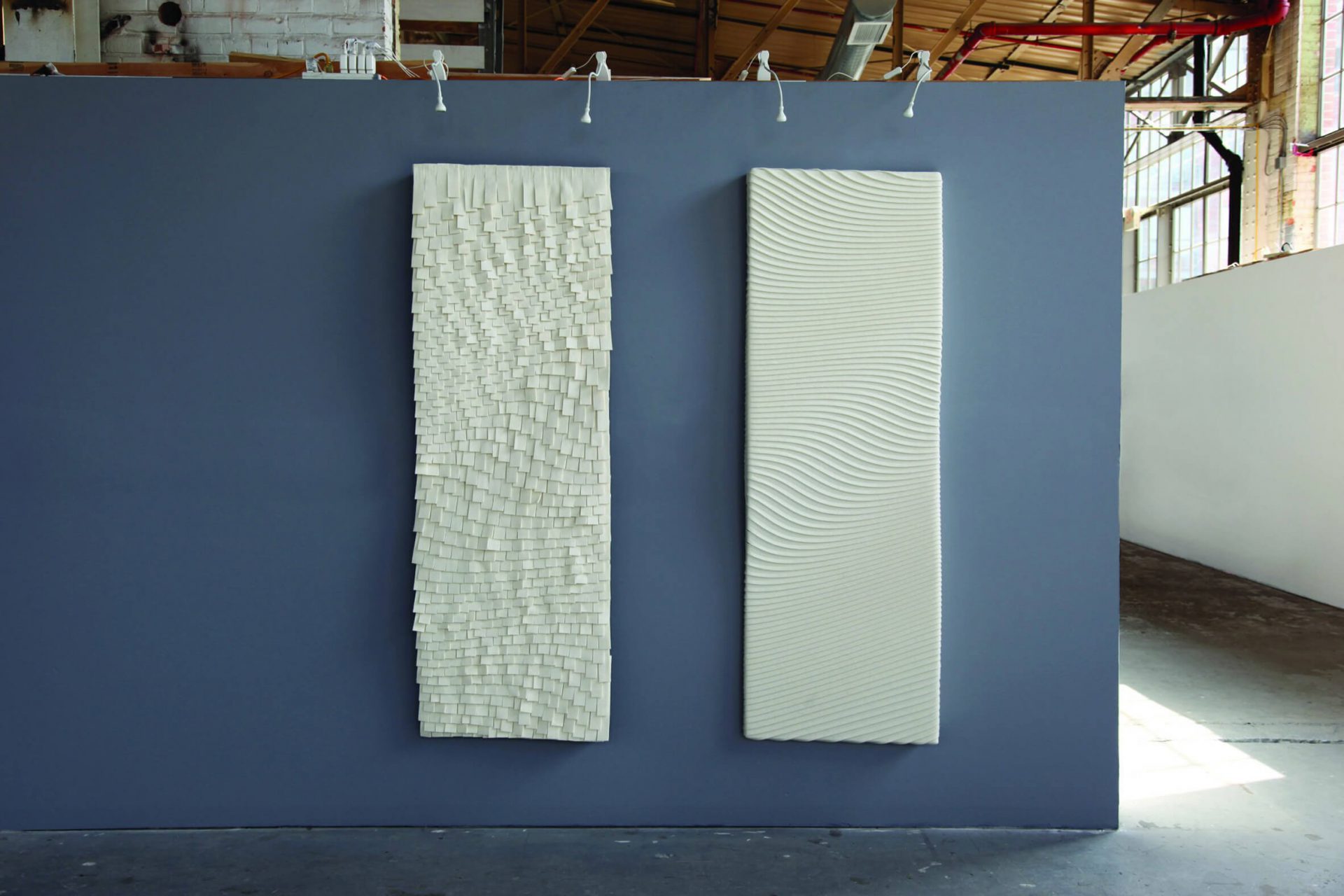Wes McGee, Tsz Yan Ng, and Asa Peller of Taubman College in Michigan devised a robotic needle felting procedure appropriate for the fabrication of 3D complicated felt shapes.
Felt is a nonwoven textile material from either natural or synthetic fibers, such as wool. It’s made by matting, condensing, and pressing fibers together, with natural and synthetic fibers mixed in at times. This job is already done by machines on an industrial level. But the idea designed by the Taubman College Architecture and Urban Planning team expanded this process with advanced technologies, offering up new options for felt.
The team at Taubman College is aiming to develop the textile sector, which has not progressed significantly in recent years. The development of 3D knitting and weaving made some advances, but these procedures limited the density and thickness of the produced fibers, restricting the varied felt qualities.

HARD + SOFT can create sculptural pieces and intricate shapes by processing felt in three dimensions.
Felt, in fact, has the unusual capacity to effortlessly incorporate into a solid. Nonwoven fabrics also have a number of useful properties, such as good sound absorption, thermal insulation, and tactile properties. Taubman College opened many possible applications for nonwoven fabrics in architecture by establishing a digital methodology for changing these qualities.
HARD+SOFT – a robotic needle felting technique that uses an additive mechanism to bind materials together without sewn thread or adhesives. It works in the same way that a 3D printer does; a robotic head with a needle is fed a strip of felt, which it subsequently arranges and adheres to a foam substrate.
This robotic approach not only allows for precision and speed in the production of nonwoven fabrics. But it allows for the creation of sculptural components and complex geometries by felting in three dimensions rather than two. It means that local differences in stiffness and characteristics within a felt panel can exist without impacting the outer surface.

Taubman College‘s team created all of the equipment and digital workflow for their robotic needle felting process, resulting in three unique techniques: shiplap, shingle, and quilt, each with its own textural effects and production procedures. These methods make use of a continuous feeding system that accurately positions and slices the felt in an automated process. These methods made prototypes of architectural and interior features such as acoustic panels, covered surfaces, and a pouf.
Read more on Archup:
Planning to construct the largest building in the world in NEOM
Poliform is bringing timelessness up to date | News | Architonic


 العربية
العربية